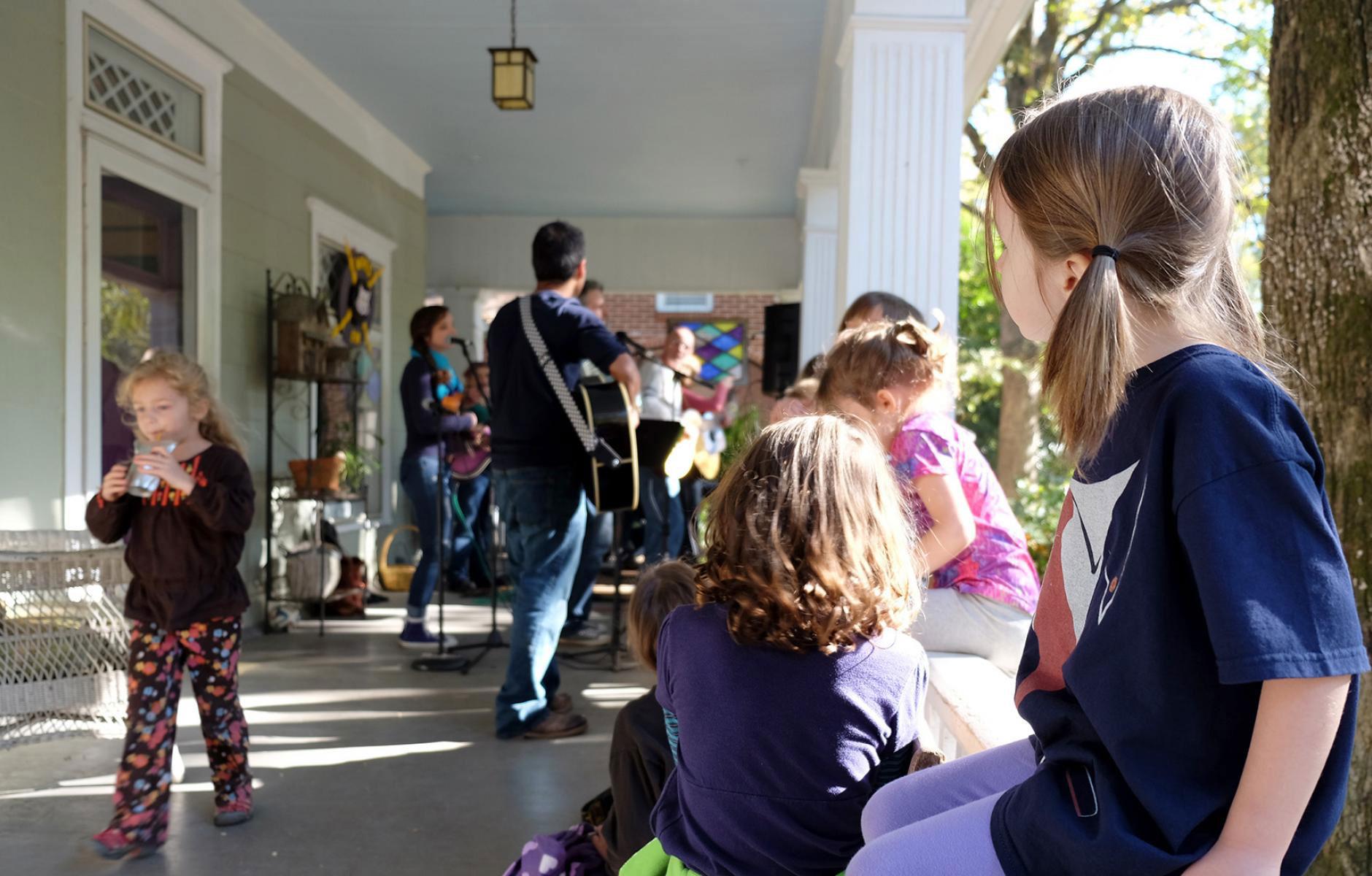
The infrastructure of community
There was a time when The New Urbanism was belittled as “The New Porchism” for its propensity toward old-fashioned porches in developments like Seaside, Kentlands, and Celebration. Although new urbanists went to great lengths designing (usable) porches and explaining how this architectural feature—appropriately applied to the right building types— benefits communities, this association was sometimes a source of irritation. The New Urbanism is about so much more than porches, proponents argued.
While porches have sometimes received the wrong kind of attention, sidewalks are a neighborhood feature that gets taken for granted—often considered not worth the serious attention of urban thinkers.
And yet, porches and sidewalks are critical elements to the public realm that may be getting their due. A recent piece in USA Today, for example, cites porches as part of a solution to America’s problem with loneliness. The author, Alexandra Hudson, writes about moving to DC and meeting a neighbor, who offered the following greeting:
“I’m Joanna,” she said. “Would you like to porch with us sometime?”
It was the first time I had ever heard the word “porch” used as a verb. But I soon learned that for Joanna, "porching" is about actively seeking to revive community, to build friendships and to learn together that the things that seem to divide us as neighbors aren't as important as those that bind us.
In Joanna's model of community engagement, the porch becomes a neutral place where people of different backgrounds can meet and befriend one another.
That view aligns with new urbanists thinking that porches, as well as stoops and other frontage elements, have an important role as semi-public spaces in communities. Porches are a transition zone between the public realm and private realm and they help to ease engagement with neighbors. As a long-time porch owner in a walkable community, I have always enjoyed sitting on my porch, watching the world go by. On the porch, I really feel that I am part of a community.
Porches and stoops sometimes make remarkable events possible. In 2007, in my neighborhood of Fall Creek, Ithaca, two young women had an idea after listening to friends play music on a porch. They arranged for more than a score of musical acts to perform on the same Sunday afternoon on their porches (my neighborhood has many musicians), and the women made a map and distributed it at local coffee shops and businesses. The first Porchfest was a rousing success, and now the idea has spread across the US and to other countries. It’s a grassroots community festival that is only possible in walkable neighborhoods with porches and other semi-public spaces attached to buildings. Few people think about the deeper implications of porches, but it is nice to see an author pointing this out in a widely distributed newspaper.

Similarly, sidewalks are the topic of a recent article in Governing magazine, where author Alan Ehrenhalt treats them as much than means to get from A to B, but also critical social infrastructure.
When I was a kid on the South Side of Chicago, we didn’t have front porches. We and our neighbors would congregate during summer evenings on the placid sidewalks of Everett Avenue, trading gossip and opinion while standing around in little knots of weak-tie fellowship. “There’s a meetin’ tonight,” one of the neighbors would sometimes announce as he came home from work in the late afternoon. And the socializing on the sidewalk would last until darkness called a halt to it.
Sidewalks are often underappreciated by local government officials, he argues.
Sidewalks are such an important part of urban social life that it seems a shame cities don’t do a better job of creating and maintaining them. A recent study by the urban planner Todd Litman concluded that the average city spent about 1 percent of its infrastructure budget on sidewalks, even though walking accounted for 11 percent of residents’ trips every day and pedestrian fatalities constituted 17 percent of all traffic deaths.
Missoula, Montana, is an exception with regard to sidewalks. Located in a state known for wide, automobile-oriented thoroughfares, Missoula has a walkable downtown and is trying to extend that walkability throughout its neighborhoods. Other American cities, including some large ones, are starting to focus more on sidewalks. Ehrenhalt reports on Litman’s research, including some news from my town.
Denver, which found that some 40 percent of its streets have no sidewalks or substandard ones, has passed an ordinance mandating special property taxes to finish its network. Sacramento is planning to use 20 percent of its transportation budget to make public sidewalks more accessible. Ithaca, N.Y., charges $70 annually per household and $185 per business to build and maintain city sidewalks.
Porches and sidewalks, on their own, do not add much to a city or town. If there is no neighborhood, for example, a porch is just a place to sit. Few people will use a sidewalk if it does not take you anywhere, or if the walk is not pleasant and stimulating. But combine porches and sidewalks together as part of an urban ensemble, and you have the building blocks of community.




